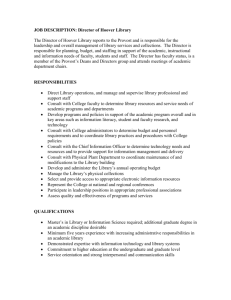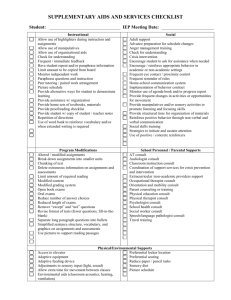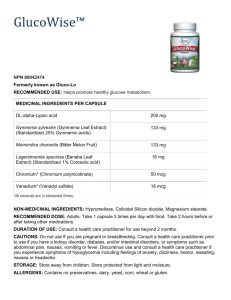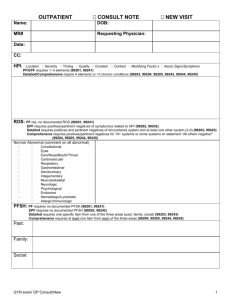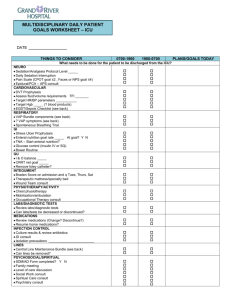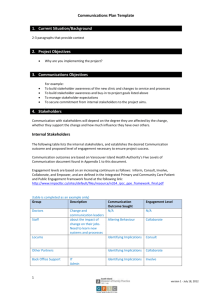University of Iowa Health care Department of Family Medicine
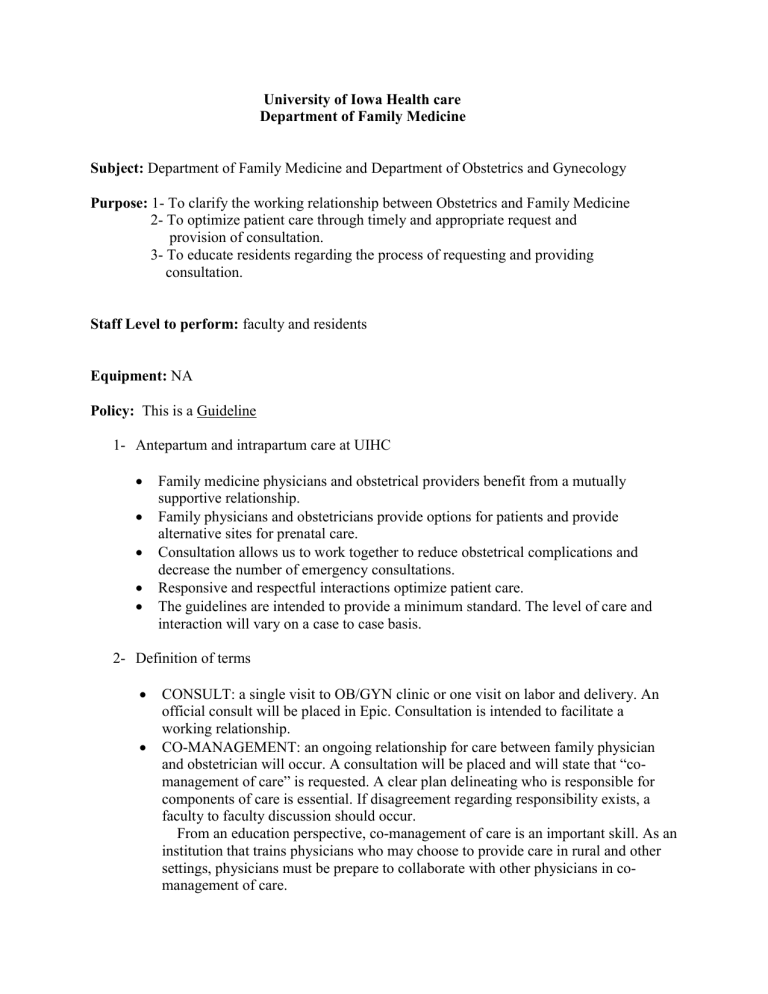
University of Iowa Health care
Department of Family Medicine
Subject: Department of Family Medicine and Department of Obstetrics and Gynecology
Purpose: 1- To clarify the working relationship between Obstetrics and Family Medicine
2- To optimize patient care through timely and appropriate request and
provision of consultation.
3- To educate residents regarding the process of requesting and providing
consultation.
Staff Level to perform: faculty and residents
Equipment: NA
Policy: This is a Guideline
1Antepartum and intrapartum care at UIHC
Family medicine physicians and obstetrical providers benefit from a mutually supportive relationship.
Family physicians and obstetricians provide options for patients and provide alternative sites for prenatal care.
Consultation allows us to work together to reduce obstetrical complications and decrease the number of emergency consultations.
Responsive and respectful interactions optimize patient care.
The guidelines are intended to provide a minimum standard. The level of care and interaction will vary on a case to case basis.
2Definition of terms
CONSULT: a single visit to OB/GYN clinic or one visit on labor and delivery. An official consult will be placed in Epic. Consultation is intended to facilitate a working relationship.
CO-MANAGEMENT: an ongoing relationship for care between family physician and obstetrician will occur. A consultation will be placed and will state that “comanagement of care” is requested. A clear plan delineating who is responsible for components of care is essential. If disagreement regarding responsibility exists, a faculty to faculty discussion should occur.
From an education perspective, co-management of care is an important skill. As an institution that trains physicians who may choose to provide care in rural and other settings, physicians must be prepare to collaborate with other physicians in comanagement of care.
TRANSFER: when an obstetrical patient’s care is transferred from family physician to obstetrician. All further care will become responsibility of the obstetrician unless or until a transfer back occurs.
Consider
CONSULT when in doubt regarding diagnosis or management
X
CONSULT
OB/GYN
OR High
Risk provider if available
ANTEPARTUM
-Fetal anomaly in vital organ system, documented
-Fetal demise, second or third trimester
-Hx of recurrent pregnancy loss (either 3 consecutive abortions or 2 consecutive abortions, depending on pt’s age)
-Poly and
Oligohydramnios
-Isoimmunization:
--RH and other with potential fetal compromise
--Minor antibodies, no potential fetal compromise
-IUGR
-Prior c-section, requesting repeat c-section
-Hx of prior midline skin vertical incision with unknown uterine incision, desiring TOLAC
-Hx of previous fetal or neonatal death with ongoing cause
-Multiple gestation:
--Di/Di twin
--Other(mono/di, mono/mono,>2)
X
X
X
X
X
X
X
X
X
Co-manage
(shared care)
Transfer
X
X
-Malpresentation >34 weeks
-Hx of major operations in uterus or cervix, such as cerclage, septum resection, myomectomy, etc
-Malignancy requiring treatment during pregnancy
-Severe chronic medical disease (heart disease,
SLE, etc)
Hyperemesis gravidarum not responsive to therapy
-2 prior c-sections, wants
TOLAC
Consider
CONSULT when in doubt regarding diagnosis or management
X
X
CONSULT
OB/GYN
OR High
Risk provider if available
X
X
X
X: if OB recommends c-section, consult with
FM high risk
OB;
If OB OK
TOLAC, transfer or comanagement with OB delivering
Diabetes type I
Gestational diabetes requiring insulin
INPATIENT
Bleeding due to placenta previa
X
Cholestasis of pregnancy X
Prior history of major X operations in uterus or cervix
Bleeding due to placenta abruptio
Manual removal placenta X
X
Co-manage
(shared care)
Transfer
X
X
Consider
CONSULT when in doubt regarding diagnosis or management
CONSULT
OB/GYN
OR High
Risk provider if available
X Outlet forceps (for those with training)
Vacuum extraction
Repair of vaginal, cervical and labial laceration
3 rd
and 4 th
degree perineal laceration:
X (notify
OB team)
X
TOLAC
X
Unless have privileges
Notification to the OB team
Preeclampsia without severe features
Preeclampsia with severe features/eclampsia intrapartum
Post partum preeclampsia with severe features
Anomaly in vital fetal organ system
NO cervical change despite use of pitocin and/or no fetal descent in second stage of labor for 4 hours
Preterm onset of labor (less than 34 weeks)
STD active or other infection potentially affecting fetus (HIV, herpes)
Postpartum hemorrhage unresponsive to medical therapy
Unscheduled c-section
X
X
X
X
X
X
Eclampsia
Umbilical cord prolapse
X if FM high risk OB not available
X if FM high
X
Co-manage
(shared care)
Transfer
X
X
risk OB not available
Amniotic fluid embolus
Any other questions or medical conditions not covered
X
X
Written : Dr. Sara Mackenzie, November 2001
Approved: November 2001 by Dept of Family Medicine and Dept of OB/Gyn
Reviewed : November 12, 2014 at the OB Faculty Committee Meeting
Reviewed and approved: January 14, 2015 at the OB Faculty Meeting
